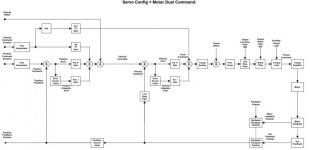Hi...
I am using AB MPL-B540K with Kinetix6200 and CLX 1756-L72, 1756-M03SE sercos interface for flying shear application cutting metal sheet with setpoint 2400 mm. Line Encoder 20000PPR/RS422 with 500 mm circum of measuring wheel. Line encoder connected to K62000 auxiliary encoder input.
We auto tune the servo with dumping factor 0.8 and machine run with cutting accuracy vary from 1.2 - 2 mm. Customer expect to have cutting accuracy below 1 mm. High speed task 2 ms with priority 5, sercos connection 250 micro second.
Is anyone can help us for idea to solve this issue?

I am using AB MPL-B540K with Kinetix6200 and CLX 1756-L72, 1756-M03SE sercos interface for flying shear application cutting metal sheet with setpoint 2400 mm. Line Encoder 20000PPR/RS422 with 500 mm circum of measuring wheel. Line encoder connected to K62000 auxiliary encoder input.
We auto tune the servo with dumping factor 0.8 and machine run with cutting accuracy vary from 1.2 - 2 mm. Customer expect to have cutting accuracy below 1 mm. High speed task 2 ms with priority 5, sercos connection 250 micro second.
Is anyone can help us for idea to solve this issue?







